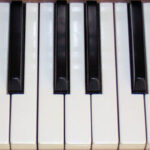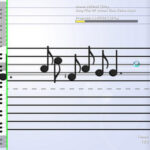Oh, no! You’ve been dreading it all week! Today’s the day for your piano lesson; the one your parents insist will make you the life of the party someday.
How would you feel if, along with your anxieties about being a disappointment to your family by not really playing well, your piano teacher said, “Today we will start with Sonata No. 14 in C-sharp minor, Op. 27, No. 2?”
How could you possibly be able to play something that sounded so complicated?
Fear not, my musical friends!
Sonata No. 14 is just another name for Beethoven’s Moonlight Sonata. The very idea of the moonlight seems to have an instant calming effect. In other words, you, too, can respond to the essence of moonlight as Beethoven did in 1801, as he completed this famous composition.
Further, the idea that the technical requirements are less challenging than are found in other piano works by Beethoven appears to make the Moonlight Sonata an ideal choice for beginning piano students.
This is especially true in the first movement.
And yet, advice on how to play Beethoven’s Moonlight Sonata encompasses much more than technical requirements.
For the purposes of this article, I would suggest that there is a difference between playing the notes and unlocking the true spirit of the music.
Perhaps finding this spirit requires knowing more about the time in which Beethoven lived as well as his personality as a composer.
Playing the Moonlight Sonata: History of the Composition
As I’ve already said, Beethoven’s Moonlight Sonata was completed in 1801. This is more than factual data, however. This date calls attention to the emergence of a new attitude, one linked with the post-French Revolutionary period.
As a quick summary, because people of the middle class had overcome the aristocracy by 1799, they felt they should be able to name their own artistic champions. In short, the personal feelings of Beethoven could be put into his compositions because the middle class was willing to value the artist on his own merits.
Certainly, the compositions of Mozart were expressive as well, but because he was financially dependent on the aristocracy, Mozart typically wrote beyond his personal feelings, music that would please the aristocracy.
In playing the Moonlight Sonata, then, you find that the spirit of the music is not found in the drudgery of just practicing the notes; instead, your practice sessions may be enlivened with visions of the early Romantic period and the historical struggles which made this period possible.
Playing the Moonlight Sonata: Experiences of the Composer
Being part of the new Romantic world didn’t mean that Beethoven’s life was full of happiness. Naturally, most people know that he began to experience the first signs of deafness in his late 20s.
Even as a child, however, Beethoven’s father, eager to promote his son as a prodigy, typically abused him if Beethoven didn’t practice long enough.
Still, Beethoven’s love of music endured through all this.
In playing the Moonlight Sonata, then, think how much easier your musical life is. Your success in playing the Moonlight Sonata doesn’t have to be entrenched in the attitude of anxiety about disappointing someone and being hurt in the process.
Instead, success can come from the safety of a new and enlightened perspective as you recognize the illustrious victories associated with the Romantic period as well as the personal sufferings of Beethoven.
Both can be part of your musical mind as you sit at the piano for however long it takes to master this composition.
Think how proud Beethoven would be that you were trying to play his Sonata No. 14, in C-sharp minor, Op. 27, No. 2.
Of course, you now realize that you can play it while dwelling on the moonlight of its calming influence.
Source: http://www.all-about-beethoven.com/



